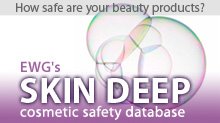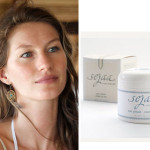In a country where regulations of beauty products are non-existent, the Skin Deep Database was a revolutionary undertaking, providing access to safety information few others have the time or knowledge to decode.
The Skin Deep database, if you are unfamiliar with this resource, provides safety scores for an extensive range of personal care products and the ingredients found in them. Using a complex algorithm, ingredients for each product are entered into a database and, using the available research from around the world, a number from 0 to 10 is given for the product, based on the ratings for each of the ingredients.
As impressive and ambitious as the database is, the system is not perfect. Many reasons exist for this, perhaps none more important than the dearth of research on cosmetic ingredients, particularly regarding their long-term impact on health. The reality is that the Environmental Working Group has taken on what is essentially an impossible task, and they are doing the best they can.
My role as head of a natural beauty retailer has required me to become intimately familiar with the Skin Deep database. Through numerous experiences and conversations, I have come up with a system I believe makes the most of this resource. This Guide to the Skin Deep database is my attempt to help you make the most of the information the database provides, by outlining what to look for, what to ignore, and how to determine whether your favorite products are deserving of your hard-earned dollars.
Tip #1: First, search by brand.
Before you look up any one product on Skin Deep, conduct a brand search first. This will give you an idea of how the brand rates overall. If most of the numbers are, say, 4 or higher, it’s unlikely the company prioritizes safety in their formulations.
Likewise, if a company’s products come back with mostly low numbers, you know that they are worth further exploration. If a few lone products in that brand have an unusually high number (what I call a “spike”), this could be a false positive. In other words, it may not actually be harmful, for reasons I’ll explain below. It certainly warrants further investigation, especially if it’s a brand or product you are interested in, since in my experience it’s pretty unusual (but not unheard of) for a company to work hard to make a line of safe products but then go rogue on one or two. I recommend reading the following tips first; then, if that doesn’t clear things up, call the company. They will almost certainly be aware of this anomaly, and can give you their explanation for it. Often, you will find the explanation makes sense. Of course, if their rationale does not sit well with you, there are plenty of other brands without these anomalies (and feel free to let the brand representative know you’ll be taking your business elsewhere).
Tip #2: Look at the Data Gap
Now that you’re ready to look at individual products, be sure to pay attention to what is called the Data Gap, which you will find on the upper right hand side of the ingredient’s page, right below the overall score. This has to do with how much research has been conducted on that particular ingredient. Many ingredients, you will find, have a score of 0, implying safety, but also have a Data Gap of 100%, meaning that no research has ever been done on the ingredient. In other words, in cases where the Data Gap is 100%, the 0 should probably be listed instead as N/A, since nothing is known about the ingredient’s safety.
Usually, the lower the Data Gap, the more reliable the hazard rating is, because it’s based on a body of research designed to assess the ingredient’s safety. The lower the Data Gap, the more research they have to work with. So if an ingredient has a rating of 0 and a Data Gap of 50%, you can be reasonably confident that the ingredient is safe. Likewise, an ingredient with a Data Gap of 70% and a hazard rating of 7 is a pretty good indication that the ingredient could very well be bad for you and/or the environment. Believe it or not, you are unlikely to find many ingredients with a data gap lower than 50% (even that is a rare find), so keep that in mind when drawing your conclusions.
Tip #3: Understand the contamination issue
Many ingredients, such as talc and several common surfactants (i.e., the stuff that makes your shampoo all foamy), have earned hazardous ratings due to the potential for contamination with substances like formaldehyde or asbestos. In the United States, ingredients are rarely tested for contamination; in Europe, however, testing is often required. This is particularly true if the brand has a Natural or Organic certification, like BDIH or EcoCert. Both of these brands require ingredients to be tested for purity in order to be certified. So if the ingredient in question seems to earn its hazard score due to contamination concerns, your next task is to find out if the product has been certified by a body that requires contamination testing.
Tip #4: Understand the fragrance issue
Once again, this is a Europe/U.S. issue. For American brands, you want to make sure that any listing of “fragrance” or “perfume” comes with a statement that only essential oils are used. For European brands, not all companies put this on their packaging, particularly if they are certified with EcoCert or BDIH, since synthetic fragrance is not allowed by either body, and European brands assume the consumer will know this when reading the label. The Skin Deep Database, however, does not take this into consideration, and will give any label with “fragrance” or “parfum” the same hazard rating, regardless of certification status. You see, they require companies to disclose the components of the fragrance, or upload a non-disclosure statement. Few European companies have done this, thus resulting in high hazard scores. A perfect example of this problem can be found when doing a search for Weleda, several of which rate in the moderate hazard category solely due to the word “fragrance” on the label. But Weleda products are BDIH certified, meaning none of the fragrance can be of a synthetic origin.
Tip #5: Don’t put too much weight on whether a company has signed the Compact.
While I think it is a great showing of support and commitment to safety and integrity for a business to sign the Compact for Safe Cosmetics, I do not think it should be given much weight. Many companies I have spoken with have expressed very legitimate concerns about this database – Europeans companies, mainly, for some of the reasons I explained above – and do not want to have their products flagged for issues that are not relevant to their ingredients or labeling standards. Furthermore, remaining compliant with the Compact requires a fairly significant commitment of time and resources. Small companies in particular may simply choose to focus on creating clean products and let their ingredients lists speak for themselves.
Of course, you may choose to support only those companies that have made the effort to sign this Compact, and that is certainly a legitimate decision that I fully support. But when it comes to the safety of a product, whether or not the company has signed the Compact is unlikely to be a reliable source of information.
Tip #6: Use the Skin Deep Database as a guide, not a Bible.
This is probably the most important tip of all. The EWG has created a wonderful starting point when researching the safety of your beauty and personal care products. It is not a divine database, however, and should not be viewed as such. Search the Internet for additional information on various ingredients, consult the Consumers Dictionary of Cosmetic Ingredients or The Green Beauty Guide’s top 200 Ingredients to Avoid list. If you are able to find several reliable sources that agree with each other, you are more likely to draw accurate conclusions.
Despite its glitches and obstacles, the Skin Deep database has dramatically changed the beauty industry and the way men and women think about their personal care products. By approaching it in a thoughtful way, using the tips I’ve provided, you will find it to be an invaluable resource that just might change your life.
*In case you’re curious, I put my name in the title of this post quite intentionally. I want to be as clear as possible that this guide is based on my personal experiences and conversations only, and was not written on behalf of the Environmental Working Group. I sent them this piece a couple of weeks ago and asked for input, but received none.



9 Comments